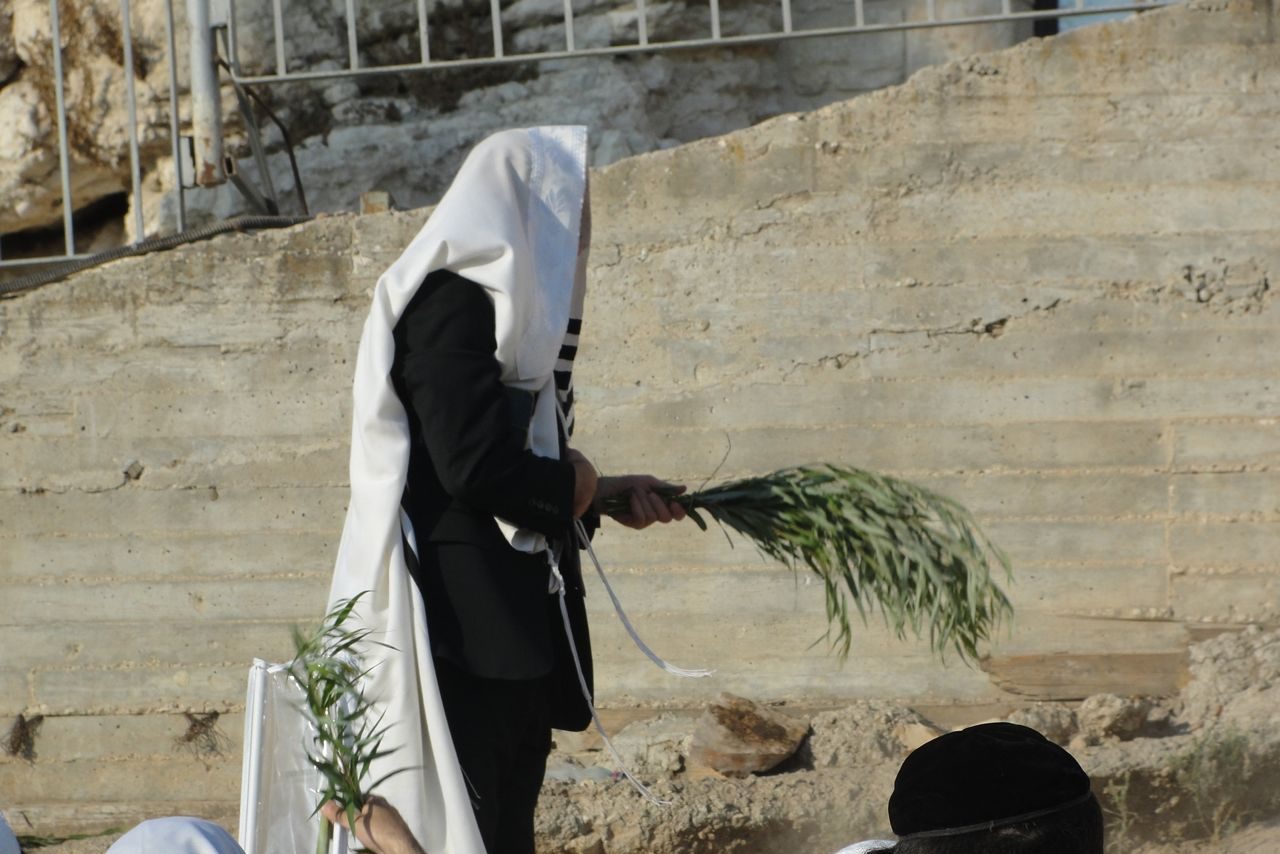On the last day of Sukkot, Hoshana Rabba, we beat a bundle of willow branches (actually one is enough) on the floor (SA OC 664:4).
The source for this “beating” is in the gemara (Sukka 44b) which states that the custom was to CHABIT the willow branches. Rashi explains that CHABIT means to wave them, as we wave the lulav. The Bach on our siman points out that this word sometimes means to cast rather than to beat, and this justifies Rashi’s interpretation. But Rambam and many other Rishonim explain that it means to beat them, and this is the custom. The Bach brings support for this interpretation from the Mishna: Rebbe Yochanan ben Berukha states in the mishna that palm branches are beaten on the ground next to the Altar (Sukkah 4:6); in the gemara, it is explained that the Sages differ and claim that the mitzva is with a willow branch. But it is logical to assume that they don’t differ on the way in which the mitzva is carried out.
The mitzva is considered a cryptic one. Why do we beat the willow branches on the ground? There are two common explanations, both based on the identity of the four species with four different kinds of Jew.
The Midrash (Vayikra Rabba 30:12) likens the etrog, which has both taste and fragrance, to Jews who have both learning and good deeds; the palm, which has taste (in its fruit, the date) but no fragrance to those who have learning but lack good deeds; the myrtle, which has fragrance but no taste to those who do good deeds but lack Torah; and the willow to those who lack both Torah and good deeds. At Sukkot we bind all of these species together to emphasize that all Jews are united and interdependent.
The first explanation explains that the arava ceremony is like a silent prayer for rain. There are three reasons that the willow branch is the most appropriate species for this prayer. First of all, it is the most thirsty of all the species, as the Torah name “arvei nachal” (river willow) suggests. Second of all, it corresponds to the simple Jews who have a limited ability to serve HaShem through study, but precisely their simplicity gives a special power to their prayers. Finally, another understanding in the Midrash relates the four species to different organs of the body; the lulav is the spine, the myrtles the eyes, the etrog the heart, and the willow the mouth. The mouth again is connected to prayer.
By beating the willow branches on the ground, we symbolize both our prostration and also our need for rain to smite and penetrate the ground.
Another explanation seems somewhat less favorable to the simple Jews. According to this explanation, the smiting of the willow leaves symbolizes their affliction.
The simplest way of understanding this is by noting that at the end of Sukkot we untie the four species, as is mentioned explicitly in the Mishna. The hint is that the simple unlearned individuals who are not out- standing in observance are protected as long as they bind themselves together with the more righteous, but if the dare to separate themselves they are likely to endure affliction. The message is that even after the holiday it is important to keep connected to those outstanding in Torah learning and observance.
Rav Kook explains this approach in a much different way. He points out that we don’t smite the willow branch, but rather with the willow branch. The message is the opposite: In the different struggles the Jewish people face, particularly the ideological struggles, our true secret weapon is not the scholars with their brilliant reasoning, but precisely the simple Jews who are devoted to the mitzvot through habit and instinct. (Moadei HaRa’ayah.)
